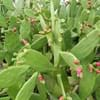Life Span
Perennial
Perennial
Type
Cactus or Succulent
Tender Perennial
Origin
Mexico
Mediterranean
Types
Not Available
Blue Anemone, Greek Windflower, Carolina Anemone, Chinese Anemone
Number of Varieties
Not Available
USDA Hardiness Zone
8-12
8-12
Sunset Zone
H1, H2, 8, 9, 12, 13, 14, 15, 16, 17, 18, 19, 20, 21, 22, 23, 24
4, 5, 6, 7, 8, 9, 10, 11, 12, 13, 14, 15, 16, 17, 18, 19, 20, 21, 22, 23, 24
Habit
Upright/Erect
Clump-Forming
Minimum Height
Not Available
Minimum Width
Not Available
Flower Color
Yellow, Red, Orange
Sky Blue
Flower Color Modifier
Not Available
Not Available
Fruit Color
Reddish Plum
Not Available
Leaf Color in Spring
Green
Green
Leaf Color in Summer
Green
Yellow, Green
Leaf Color in Fall
Green
Not Available
Leaf Color in Winter
Green
Not Available
Leaf Shape
Globe shaped
Compound
Plant Season
Spring, Summer, Fall, Winter
Spring
Sunlight
Full Sun, Partial Sun
Partial Sun, Partial shade
Type of Soil
Loamy, Sandy, Well drained
Loam
The pH of Soil
Acidic, Neutral, Alkaline
Acidic, Neutral
Soil Drainage
Well drained
Average
Bloom Time
Spring, Late Spring, Early Summer
Early Spring, Spring, Late Spring, Early Summer
Tolerances
Drought, Salt
Salt
Where to Plant?
Ground, Pot
Ground, Pot
How to Plant?
Grafting, Seedlings, Transplanting
Seedlings
Plant Maintenance
Medium
Medium
Watering Requirements
Does not require lot of watering, Water once every two or three weeks, Water when soil is dry
Medium, Prefer drip-irrigation instead of Over-head watering, Use Mulches to help prevent water loss during hot and windy weather, Water Deeply
In Summer
Lots of watering
Lots of watering
In Spring
Moderate
Moderate
In Winter
Average Water
Average Water
Soil pH
Acidic, Neutral, Alkaline
Acidic, Neutral
Soil Type
Clay, Loam, Sand
Loam
Soil Drainage Capacity
Well drained
Average
Sun Exposure
Full Sun, Partial Sun
Partial Sun, Partial shade
Pruning
Prune if you want to improve plant shape, Prune ocassionally, Remove dead leaves
Prune prior to new growth, Remove dead or diseased plant parts, Remove deadheads
Fertilizers
All-Purpose Liquid Fertilizer
All-Purpose Liquid Fertilizer
Pests and Diseases
Aphids, Caterpillars, Cochineal insect, Mealybugs, Nematodes, Red spider mite, Rodent, Root rot, Scale, Slugs, Snails, Thripes, Viruses, Worms
Botrytis collar rot, Crown gall, Cucumber mosaic, Downy mildew, Impatiens necrotic spot, Leaf curl, Phytophthora, Rhizoctonia crown rot, Root rot, Rust, Sclerotinia blight, Southern blight
Plant Tolerance
Drought
Drought
Flower Petal Number
Single
Single
Foliage Texture
Bold
Fine
Foliage Sheen
Matte
Matte
Attracts
Aphids, Birds, Rodents
Not Available
Allergy
Not Available
Skin irritation
Aesthetic Uses
Cottage Garden, Showy Purposes
Not Used For Aesthetic Purpose
Beauty Benefits
Nourishes scalp, Reduce Bruises, Remove blemishes
Not Available
Environmental Uses
Air purification
Air purification
Medicinal Uses
Antioxidants, Diabetes, Diarrhea, Hangover
Asthma, Cough, Gout, Menstrual Disorders, Stomach pain
Part of Plant Used
Flowers, Leaves
Flowers, Leaves
Other Uses
Biomass for fuel, Employed in herbal medicine, Fine spines and trichomes are used as fiber for weaving, Oil is used for aromatherapy, Showy Purposes, Used As Food, Used as Ornamental plant, Used in construction, Used in Furniture
Not Available
Used As Indoor Plant
No
No
Used As Outdoor Plant
Yes
Yes
Garden Design
Container, Feature Plant, Fruit, Fruit Tree, Hedges, Houseplant, Mixed Border, Rock Garden, Wall
Bedding Plant, Container, Mixed Border, Rock Garden / Wall, Wildflower
Botanical Name
OPUNTIA ficus-indica
ANEMONE 'Harmony Blue'( HARMONY SERIES)
Common Name
Indian fig opuntia, Barbary fig, cactus pear, spineless cactus
Anemone, Harmony Blue Anemone
In Hindi
Opuntia ficus-indica
रत्नज्योति
In German
Opuntia ficus-indica
Anemone
In French
Opuntia ficus-indica
Anémone
In Spanish
Opuntia ficus-indica
Anémona
In Greek
Φραγκοσυκιά
ανεμώνη
In Portuguese
Opuntia ficus-indica
Relutantemente
In Polish
Opuntia ficus-indica
Zawilec
In Latin
Opuntia ficus-indica
VivoSocial
Phylum
Magnoliophyta
Magnoliophyta
Class
Magnoliopsida
Magnoliopsida
Order
Caryophyllales
Ranunculales
Family
Cactaceae
Ranunculaceae
Genus
Opuntia Mill
Anemone
Clade
Angiosperms, Eudicots
Not Available
Tribe
Opuntieae
Not Available
Subfamily
Opuntioideae
Not Available
Number of Species
Not Available
Season and Care of Barbary Fig and Anemone
Season and care of Barbary Fig and Anemone is important to know. While considering everything about Barbary Fig and Anemone Care, growing season is an essential factor. Barbary Fig season is Spring, Summer, Fall and Winter and Anemone season is Spring, Summer, Fall and Winter. The type of soil for Barbary Fig is Loamy, Sandy, Well drained and for Anemone is Loam while the PH of soil for Barbary Fig is Acidic, Neutral, Alkaline and for Anemone is Acidic, Neutral.
Barbary Fig and Anemone Physical Information
Barbary Fig and Anemone physical information is very important for comparison. Barbary Fig height is 240.00 cm and width 180.00 cm whereas Anemone height is Not Available and width Not Available. The color specification of Barbary Fig and Anemone are as follows:
Barbary Fig flower color: Yellow, Red and Orange
Barbary Fig leaf color: Green
Anemone flower color: Sky Blue
- Anemone leaf color: Green
Care of Barbary Fig and Anemone
Care of Barbary Fig and Anemone include pruning, fertilizers, watering etc. Barbary Fig pruning is done Prune if you want to improve plant shape, Prune ocassionally and Remove dead leaves and Anemone pruning is done Prune prior to new growth, Remove dead or diseased plant parts and Remove deadheads. In summer Barbary Fig needs Lots of watering and in winter, it needs Average Water. Whereas, in summer Anemone needs Lots of watering and in winter, it needs Average Water.





